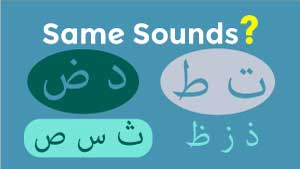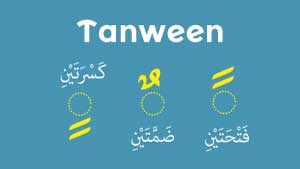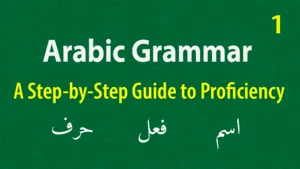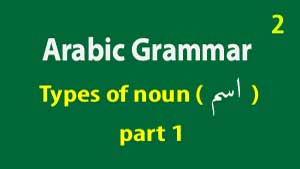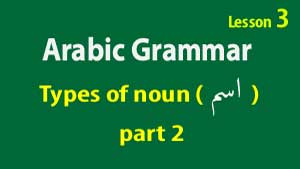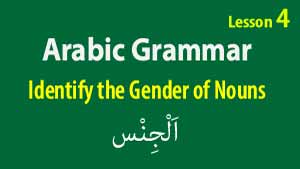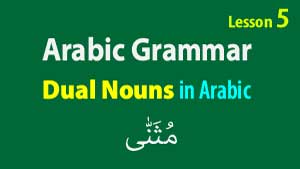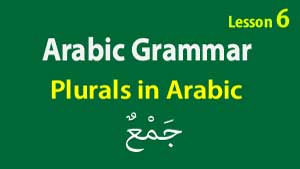Learn Arabic
How to Learn Arabic Faster
This course is designed in a way that absolute beginners, who have even never seen the Arabic alphabet, can start and take it to an advanced level of Arabic grammar, without the need of a physical instructor. The course is of course designed in step-by-step progress. The first few lessons emphasize learning to read Arabic, which is the most critical phase for most English speakers. It is highly recommended not to jump or skip a lesson, even it feels a bit difficult. Every next lesson is based on the previous progress. Please take your time, 1 day, 2 days, or even more on a lesson, and only proceed to the next when you have completely understood the current one.
Writing practice is most important and helps a lot in remembering things on long terms basis. It is also recommended to write on separate paper rather than typing with the keyboard, although text input boxes are given in some lessons.
We have divided the website into two main sections based on the knowledge level of users. Both sections follow the step-by-step learning approach. The first section explains:
-
Section 1
How to read Arabic script? (If you can already read the Quran with ease, you can move on to the next section, that is:) -
Section 2
Learn Arabic grammar step-by-step.
Section 1: Arabic Reading
Arabic is one of the languages written from right to left. While most Western European languages use the Roman script, many Middle Eastern and ancient Central Asian languages use the Arabic script.
The following video series teaches how to read and write an Arabic script. It is also available as a playlist on YouTube.
Section 2: Arabic Grammar for Beginners
The Two Approaches to Learning Arabic
There are two widely used paths for learning Arabic grammar:
- The first approach begins with nouns and simple nominal sentences (sentences without verbs).
- The second starts with verbs and verbal sentences.
In this course, we’ll follow the first approach—starting with nouns and nominal sentences.
How difficult is to Learn Arabic
Learning Arabic for English speakers is generally considered a challenging task, but in reality, the difficult part is learning the Arabic script. Once the student learns how to read Arabic, then it’s like learning any other European language with different grammatical structures and rules.
Arabic has different dialects in different regions. This website teaches classical Arabic. Also, known as high Arabic, Quranic Arabic, and Fusshah. The way to the learning of a particular dialect also goes through classic Arabic. First, you would learn classic Arabic and then build a dialect based on classic language.
Textual topics included in this website are:
Section 1: How to Read Arabic?
This section starts from the Arabic alphabet and addresses all of the important rules, required for reading Arabic.
Arabic Alphabet Video
Arabic Alphabet
Arabic Connecting Letters
- What is a word segment?
- Arabic non-connecting letters
- Joining Arabic letters chart
- Exercise 1
- Exercise 2
Arabic Vowels
Arabic Long Vowels
Sukoon
- What is sukoon in Arabic?
- Examples of Arabic Sukoon symbol
- Arabic diphthongs
- Comparison between long vowels and diphthongs
- Exercise
Tanween
Shadda
Hamza in Arabic
- Different forms of Hamza
- Hamza with alif
- Difference between hamza and alif
- Hamza with wow ؤ
- Hamza with ya ئ
- Hamza without kursi
Summary of Arabic reading rules
This page summarizes all Arabic reading rules that we learned in previous lessons.
Section 2: Basic Arabic Grammar
The basic Arabic grammar section includes elementary rules required to construct compounds (sentences and phrases). At the end of this section, we will be able to make simple nominal sentences.
Map of basic Arabic grammar
Noun in Arabic grammar
Gender in Arabic
- Introduction to gender in Arabic
- Characteristics of Arabic feminine nouns
- Arabic gender chart
- Masculine nouns with ة
- Nouns with common gender
- Feminine gender formation from masculine
- Vocabulary building
- Exercise
Dual in Arabic Grammar
- What are dual nouns in Arabic?
- How to make Arabic dual nouns?
- Examples of dual formation
- Examples of dual nouns in Arabic
Plural nouns in Arabic
- Types of plural nouns in Arabic
- Sound plural in Arabic
- Broken Plural in Arabic
- Arabic terminologies for plurals
- Examples of Arabic sound masculine plurals
- Examples of Arabic sound feminine plurals
- Arabic broken plurals list
Arabic Grammatical Cases
- What are grammatical case?
- How many cases does Arabic have?
- How to recognize the grammatical case in Arabic?
- Grammar cases of Arabic duals
- Grammar cases of Arabic plurals
- Summary of the lesson
- Arabic cases chart
- Arabic cases chart with examples
- Exercise
Arabic Definite Article
- Definite article اَلْ
- Arabic definite article rules
- Exercise
- Hamza tul wasl همزة الوصل
- Rules of Hamza wasl
Arabic word patterns
Arabic Indeclinable Nouns
- What is an indeclinable noun?
- Types of the declinable noun (مُعْرَبٌ)
- Which nouns are غير منصرف ?
- Exercise
Compounds
Arabic has two types of sentences:
- Nominal sentences are verbless sentences.
- Verbal sentences have verbs.
Phrases are simple constructions that help in complex sentence buildings.
Arabic phrases or phrasal constructions have several type, i.e.
- Adjectival phrases,
- Possessive phrases,
- Prepositional phrases,
- Conjugational phrases, and
- Demonstrative phrases.

